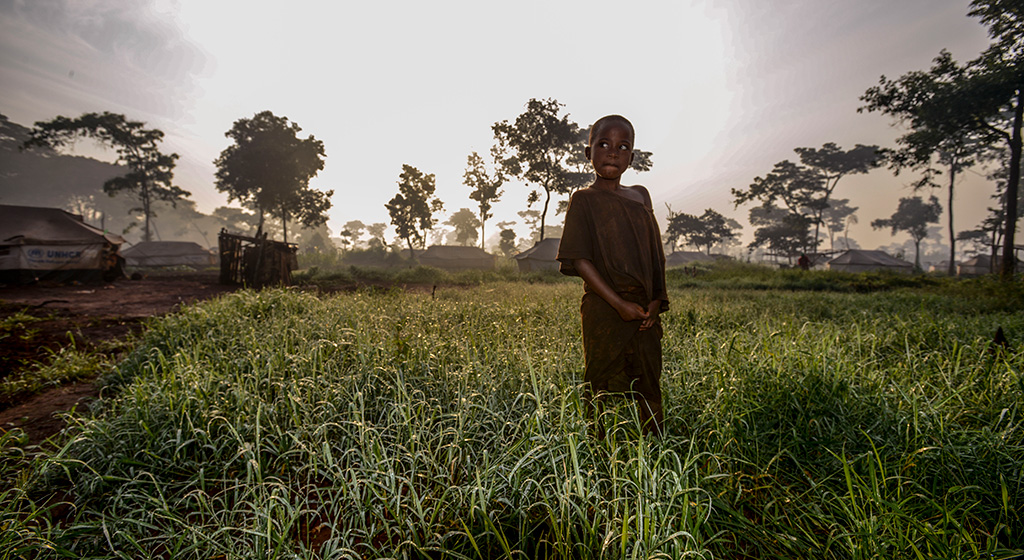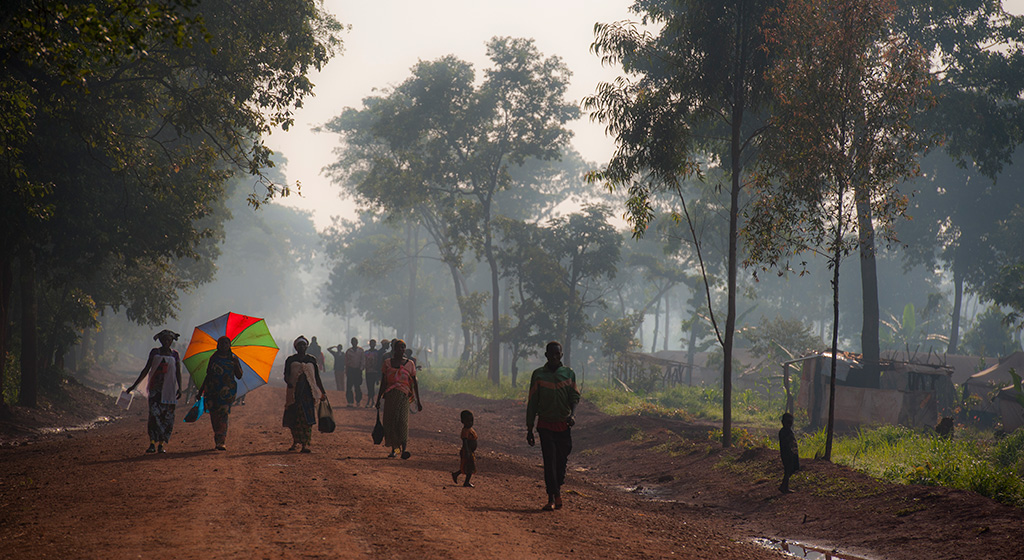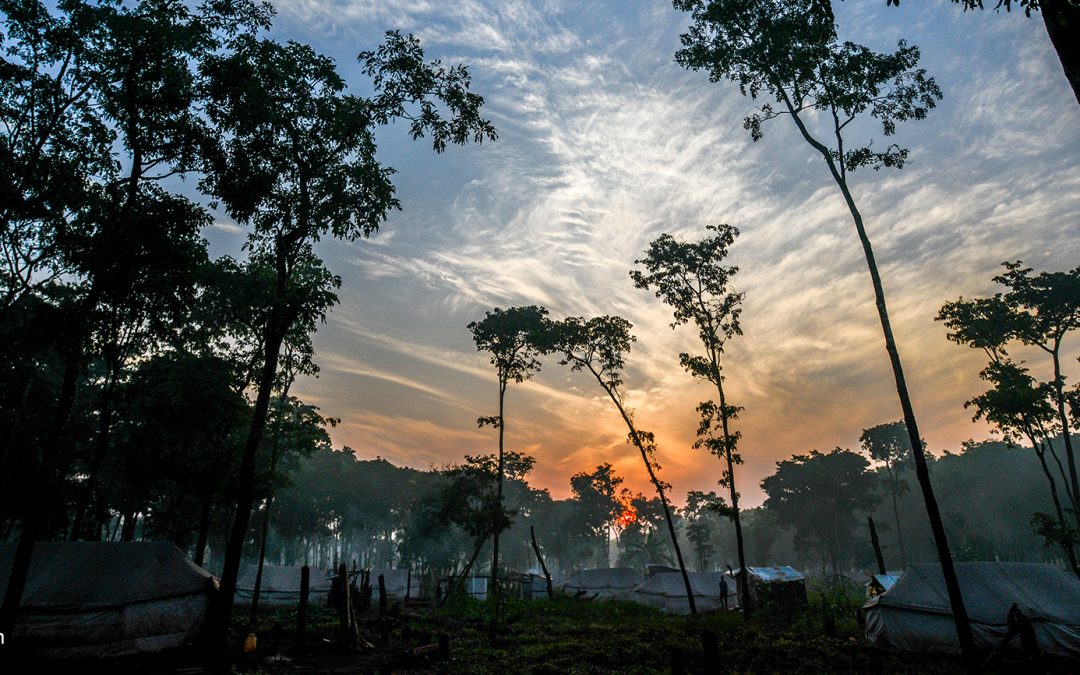Refugees in Tanzania find a safe life in a stable country whose government and people are welcoming. But the intense demands they’ve placed for decades on a sensitive, rural landscape is degrading the environment and causing relations to deteriorate. When refugees and host community members must walk up to 15 kilometers in search of firewood to use as cooking fuel, they exist in a precarious environmental, political, and humanitarian situation—one that UNHCR is now addressing.
There is no global strategy on the environment as there is for livelihoods, shelter and other sectors. So an environment and wellbeing strategy, now being crafted by UNHCR Tanzania, is setting a new standard in how country operations mitigate the impact of refugees on their environment.
“It’s all-encompassing and very holistic,” says UNHCR consultant Mark Gibson, who is drafting the strategy. “The national and local Government, along with our environmental partners have been very supportive of its development.”
Addressing old problems and preventing the new
The 250,000 refugees currently living in Tanzania are 100 percent dependent on collecting wood for cooking and other energy needs. UNHCR has tried to address the ongoing damage; it moved to providing transitional shelters, launched a selective logging campaign that implored refugees to take only what they needed from the forests and worked with environmental partners to raise 1.3 million tree seedlings in 2016 alone. But having a strategy in place to protect and restore the environment will be a leap forward, where previously only small steps have been made.
The strategy presents a lofty and comprehensive vision of what the relationship between refugees and the environment could look like. It seeks; “To ensure refugees are hosted in a way that prevents, minimizes, and/or remediates environmental damage through interventions that are culturally acceptable, sustainable, and respectful of the dynamic relationships between natural resource use, environmental quality, health and wellbeing, and the needs of the refugee and host communities.”

The 250,000 refugees currently living in Tanzania are 100 percent dependent on collecting wood for cooking and other energy needs. © UNHCR/Sebastian Rich
The strategy lays out a plan for conserving and managing environmental concerns, for example through alternative cooking fuels and energy efficient cooking methods. It presents ideas for improving water security and conservation, replacing trees that have been felled for firewood and construction, and sustainably improving food security and waste management. It also suggests Innovation Villages, where new farming or construction methods can be piloted and demonstrated to build acceptance and enthusiasm among residents who might be hesitant to make changes. Ultimately, it aims to establish the environmental impacts associated with refugee camps in Tanzania and develop ways to deliver long-term, evidence-based improvements to environmental protection and resilience.
Coming together to protect and restore
Created at the request of the government, the strategy deals with the three existing camps in Tanzania, highlighting areas where efforts need to be stepped up and identifying priorities in the face of limited resources.Along with national NGOs, the Ministry of Home Affairs is providing input to the strategy through its Environmental Coordinator, and District Natural Resources Officers are supplying local context. Most importantly, the strategy aims to unite refugees and members of the host community in Environment and Wellbeing Committees that can voice concerns, relate previous experiences and launch their own projects. “We need to consider refugees’ own needs and cultures,” says Gibson.
“We need to incorporate their knowledge and experiences. These committees are really important to capture their understanding of the environment and traditional management techniques.”
Gibson anticipates that having a strategy in place will help UNHCR get financial support for environmental initiatives, provide mechanisms to inform donors about how UNHCR is addressing environmental needs, and where funds are most needed. Partners were in agreement about the strategy’s holistic scope. But Gibson acknowledges that environmental initiatives can be tough to implement with a shortage of dedicated environment and energy staff and short-term funding associated with humanitarian emergencies.
“The core mandate of UNHCR isn’t environmental protection,” Gibson says, “so it requires additional effort to engage others and drive change when people are focused on other issues that have much more of a humanitarian aspect: protection, shelter, education and WASH. But the environment cuts through all of these, so it really does need to be mainstreamed.”
Mainstreaming environmental protection
Operational activities at UNHCR tend to be responsive, reacting to emergencies without time to plan for the future. The Tanzania strategy integrates environmental management into camp management activities and looks forward by outlining ways the government can open pre-identified spaces for refugees in an environmentally conscious way. And since environmental impacts result from activities in every sector from shelter to education, pretty much everyone needs to be familiar with ways to mitigate them.

Burundi refugees go about their daily life in the early Morning in the UNHCR Nduta refugee camp Kigoma district Tanzania.
© UNHCR/Sebastian Rich
The strategy UNHCR Tanzania is creating makes environmental protection everyone’s concern, and responsibility. “The innovation, I feel, is really engaging the host community and refugee community and actually putting a value to environmental interventions either through cash-based initiatives or livelihoods so we’re managing it through an economic process,” Gibson says. “Because people don’t value the resources until it starts costing them.” He hopes the strategy can be used beyond Tanzania, to inform other operations and any future global strategy for the environment. “This is a significant step being taken by UNHCR and I really would like to see it benefit refugees, the host community, but hopefully also see it rolled out in a global context.”
We’re always looking for great stories, ideas, and opinions on innovations that are led by or create impact for refugees. If you have one to share with us send us an email at innovation@unhcr.org
If you’d like to repost this article on your website, please see our reposting policy.

